NASA orbiter pictured a ‘very recent impact crater’ on Mars
- A NASA spacecraft captured a dramatic view of a fresh crater on the surface of Mars
- The NASA Mars Reconnaissance Orbiter is a spacecraft that’s been orbiting Mars since 2006
- The new impact was photographed in stunning detail
Published on Feb 27, 2024 at 8:09 PM (UTC+4)
by Amelia Jean Hershman-Jones
Last updated on Feb 28, 2024 at 1:29 PM (UTC+4)
Edited by
Alessandro Renesis
A NASA spacecraft has captured a dramatic view of a fresh impact crater on the surface of Mars in stunning detail.
The image is proof, if it were needed, that our solar system is still very much dynamic.
NASA Mars Reconnaissance Orbiter is a spacecraft that’s been orbiting Mars since 2006.
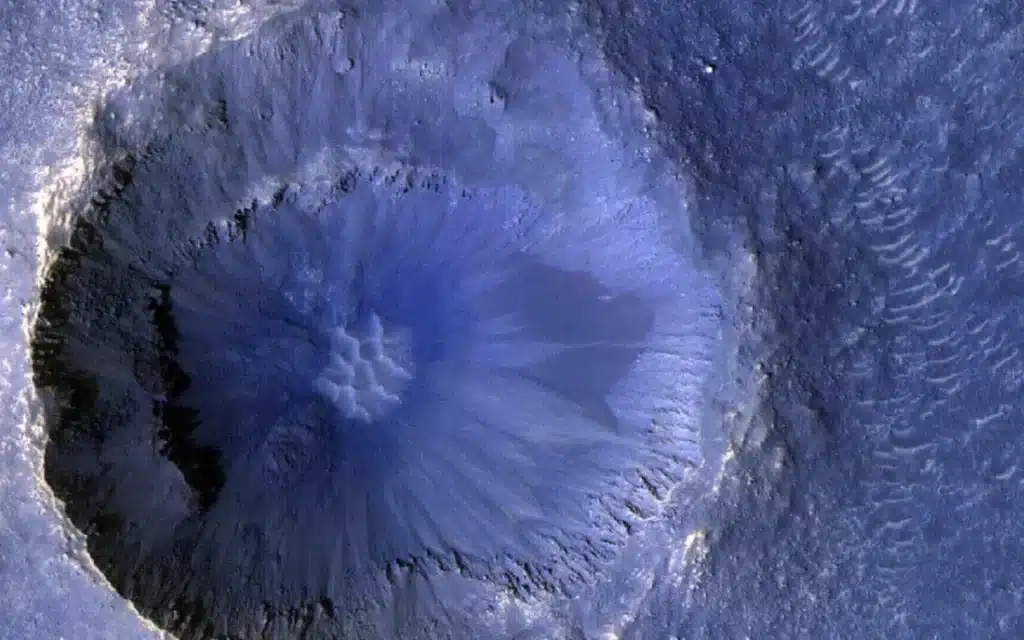
READ MORE! Astronaut reveals transformative ‘recalibration’ benefit of living in Mars simulator
Onboard it has an extremely powerful camera to observe the surface of the Red Planet.
The High Resolution Imaging Experiment (HIRISE) camera recently captured this high-detail image.
And the team from the University of Arizona have now released the image of the crater on their website.
“A Small, Very Recent Impact Crater,” their post said.
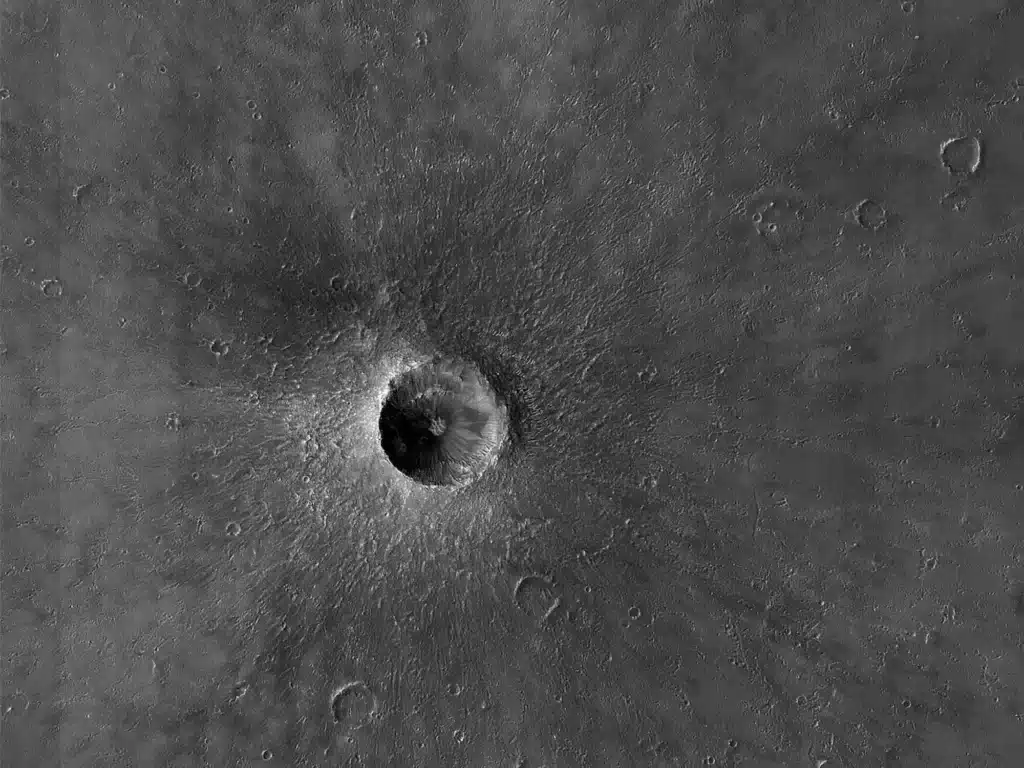
“That’s it. That’s the whole caption,” they quipped.
Simple and to the point.
But the detailed crater image is anything but simple or small.
In fact, the mark from the impact shows the crater to be 1 km (0.6 m) across.
The zoomed-out image, on the other hand, is 5 km (3.1 m) wide.
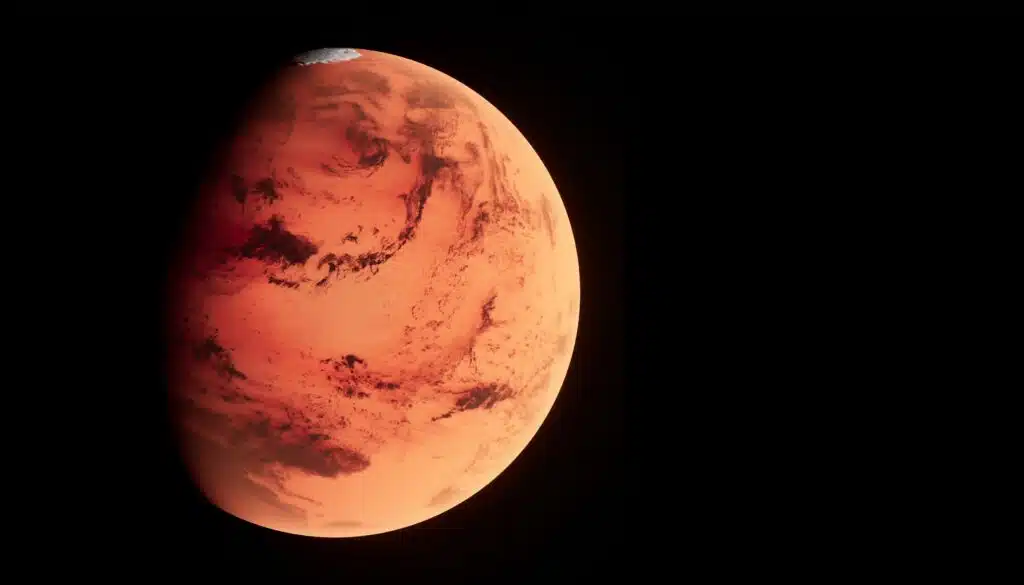
Located in the equatorial region of the Red Planet, you can see markings caused by ejecta strewn around the impact basin.
While the scientists looking after the Martian camera remotely know the impact was fresh, they don’t know when it actually happened.
However it’s certainly not the only crater found on our neighboring planet.
In fact, NASA has estimated there to be over a quarter-million impact craters on the Red Planet.
These are roughly the size of the Barringer Crater in Arizona, US, at 1,219 m (4,000 ft) across.
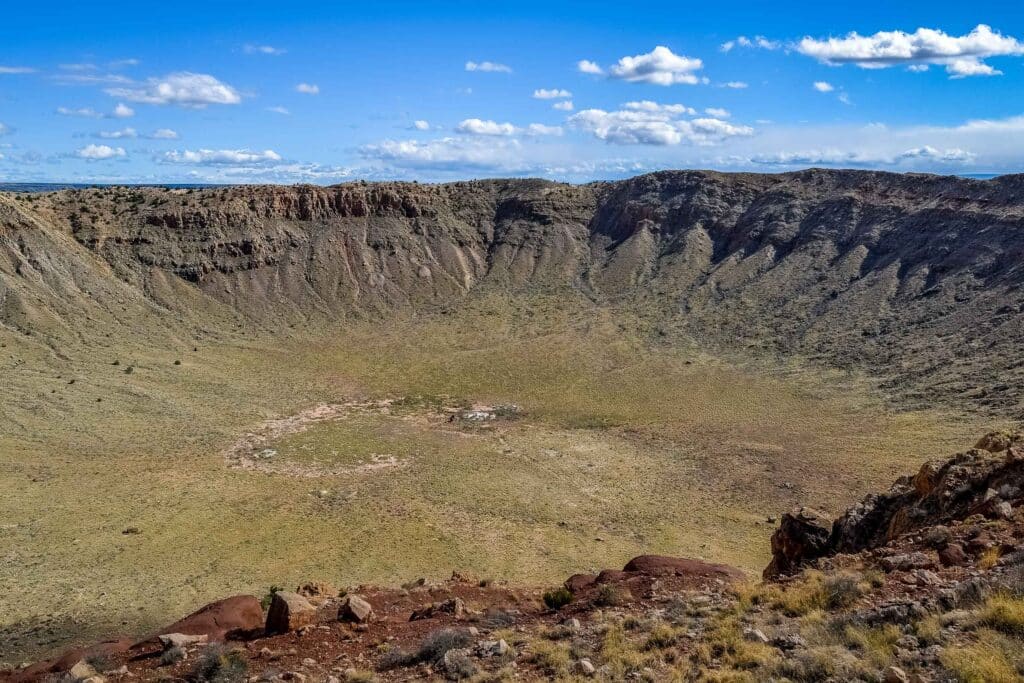
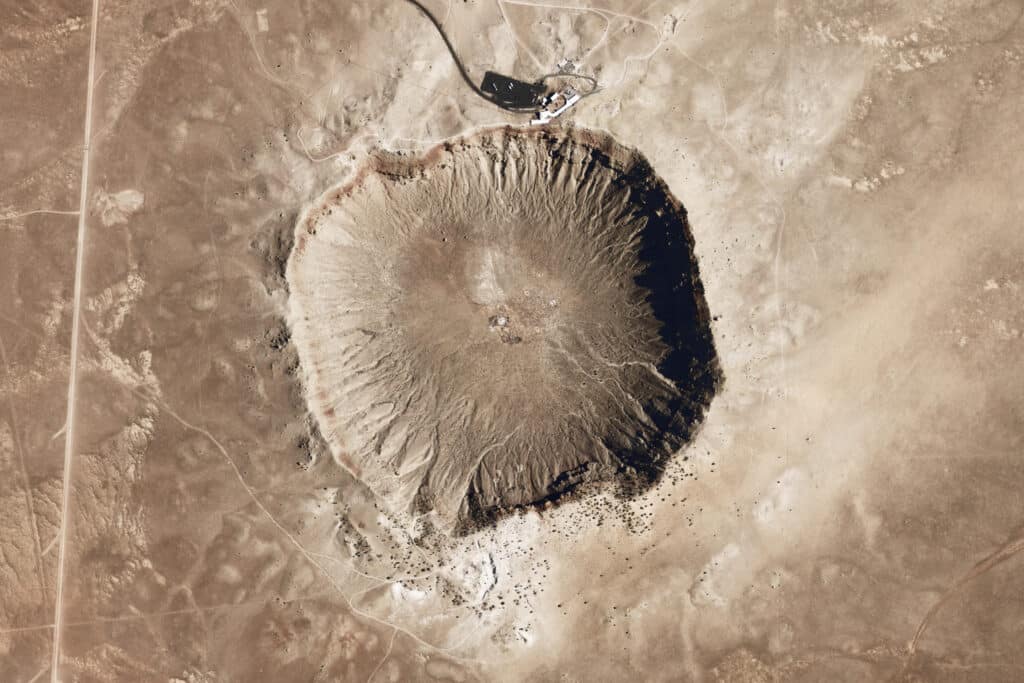
There are also over 43,000 larger Martian craters that are over three miles wide.
In comparison, Earth has only 120 known impact craters.
While marsquakes happen, the erupting volcanoes on water-covered Earth make it far more volatile.
That means geologic activity or volcanism doesn’t disturb or cover new craters in the same way.
While significant strikes on Earth are rare, every day around 100 tons of dust and sand-sized particles fall through Earth’s atmosphere and burn up.
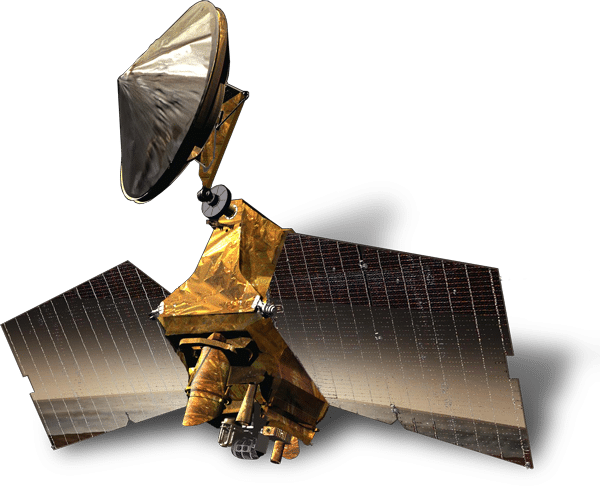
One “automobile-sized asteroid” a year breaks through but explodes, explains NASA.
In fact, new footage shared by astronomers showed a newly discovered asteroid’s close encounter with Earth.
What’s more, NASA have finally opened up debris from a $1,000,000,000 asteroid.
Impacts by objects roughly 460 feet in diameter occur every 10,000 to 20,000 years.
And the one that wiped out the dinosaurs?
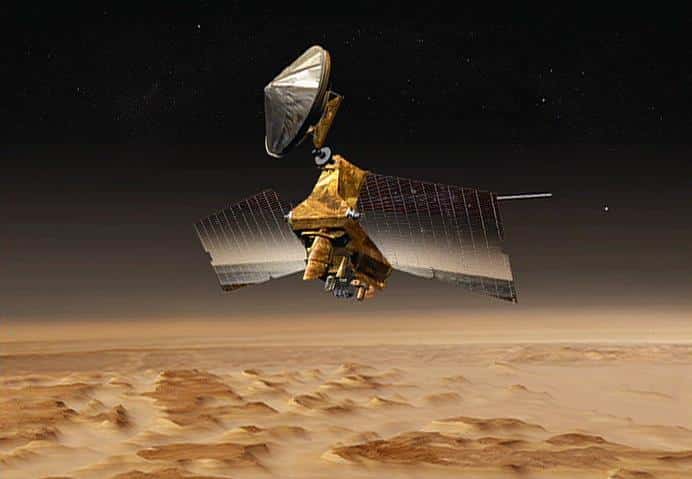
A rock that’s half-mile across or larger happens on 100-million-year timescales.
So what’s causing them?
The Red Planet is closer to our solar system’s asteroid belt, that is a region teeming with millions of potential asteroid projectiles.
The Martian atmosphere is just 1 percent the volume of Earth’s.
That means when they do cross paths with the planet, asteroids are less likely to burn up and disintegrate before they hit the ground.
However, NASA do occasionally have to act like when they launched a mission to intercept the ‘God of Destruction’ asteroid.
DISCOVER SBX CARS: The global premium car auction platform powered by Supercar Blondie

London-based Amelia cut her journalistic teeth covering all things lifestyle, wellness, and luxury in the UK capital. Fast-forward a decade and the senior content writer and editor has put pen to paper for glossy magazines, busy newsrooms, and coveted brands. When her OOO is on from writing about cars and heading up on-site SEO you can find her spending quality time with her young family, in the gym, or exploring the city she loves.




